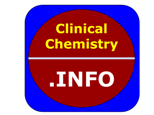Clin Chem Lab Med. 2025 Oct 20. doi: 10.1515/cclm-2025-1032. Online ahead of print.
ABSTRACT
With the advent of flow cytometry and dedicated fluorescent dyes in the 1980s, automated reticulocyte enumeration has effectively superseded conventional manual microscopy, dramatically boosting throughput and precision while, through metrics including the immature reticulocyte fraction (IRF) and reticulocyte production index (RPI), delivering previously unattainable diagnostic resolution for anemia phenotyping, longitudinal tracking of marrow erythropoiesis, and evaluation of functional iron deficiency. Yet appreciable heterogeneity in analytical principles, reagent chemistry, and calibration frameworks persists across platforms, constraining result comparability and uniform interpretation across systems. The International Council for Standardization in Haematology (ICSH) is advancing commutable reference materials built on stable cell lines or synthetic microspheres, together with globally harmonized reference intervals, to achieve interoperable performance among instruments. Concurrently, the capital expense and servicing requirements of high-end fully automated analyzers continue to be a major impediment to clinical access to automated reticulocyte testing. This narrative review focuses on the “standardization and clinical accessibility of automated reticulocyte counting,” systematically elaborating the core technical principles and characteristics of mainstream instruments, analyzing advances and challenges in standardization, and envisioning its application prospects in global clinical practice.
PMID:41103190 | DOI:10.1515/cclm-2025-1032
